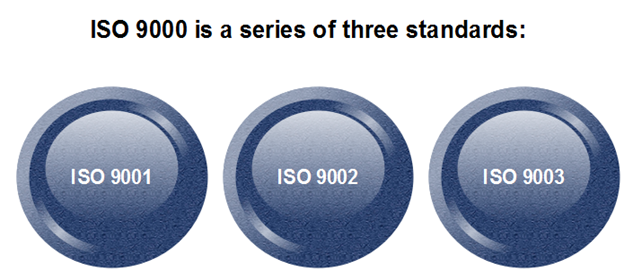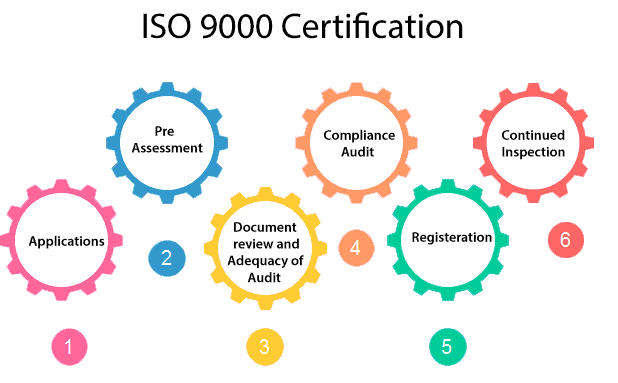ISO 9000 Certification
ISO (International Standards Organization) is a group or consortium of 63 countries established to plan and fosters standardization. ISO declared its 9000 series of standards in 1987. It serves as a reference for the contract between independent parties. The ISO 9000 standard determines the guidelines for maintaining a quality system. The ISO standard mainly addresses operational methods and organizational methods such as responsibilities, reporting, etc. ISO 9000 defines a set of guidelines for the production process and is not directly concerned about the product itself.
Types of ISO 9000 Quality Standards

The ISO 9000 series of standards is based on the assumption that if a proper stage is followed for production, then good quality products are bound to follow automatically. The types of industries to which the various ISO standards apply are as follows.
- ISO 9001: This standard applies to the organizations engaged in design, development, production, and servicing of goods. This is the standard that applies to most software development organizations.
- ISO 9002: This standard applies to those organizations which do not design products but are only involved in the production. Examples of these category industries contain steel and car manufacturing industries that buy the product and plants designs from external sources and are engaged in only manufacturing those products. Therefore, ISO 9002 does not apply to software development organizations.
- ISO 9003: This standard applies to organizations that are involved only in the installation and testing of the products. For example, Gas companies.
How to get ISO 9000 Certification?
An organization determines to obtain ISO 9000 certification applies to ISO registrar office for registration. The process consists of the following stages:

- Application: Once an organization decided to go for ISO certification, it applies to the registrar for registration.
- Pre-Assessment: During this stage, the registrar makes a rough assessment of the organization.
- Document review and Adequacy of Audit: During this stage, the registrar reviews the document submitted by the organization and suggest an improvement.
- Compliance Audit: During this stage, the registrar checks whether the organization has compiled the suggestion made by it during the review or not.
- Registration: The Registrar awards the ISO certification after the successful completion of all the phases.
- Continued Inspection: The registrar continued to monitor the organization time by time.
|


 For Videos Join Our Youtube Channel: Join Now
For Videos Join Our Youtube Channel: Join Now









